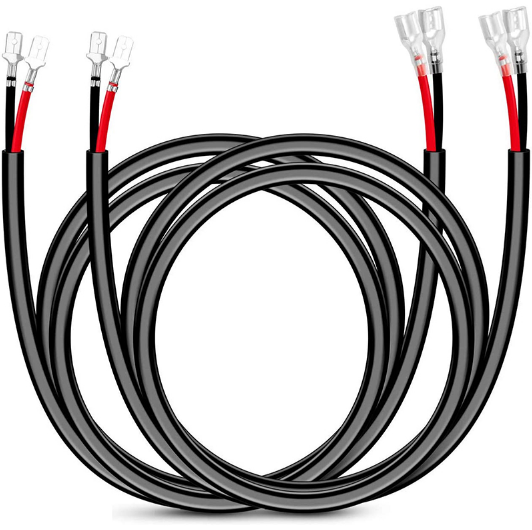When purchasing a car, you often consider its compact structure and durability to ensure it lasts a long time. A crucial component in all vehicles that contributes to these qualities is the wiring harness. To maintain the reliability of your vehicle's accessories, it's essential to focus on regular maintenance and routine inspection of the wiring harness.
What Does a Wiring Harness Do in a Car?
The wiring harness is the combination of electrical cables, or assembly of wires, that connects all electrical and electronic (E/E) components in the automotive vehicle, like sensors, electronic control units, batteries, and actuators.
The wiring harness in your car protects all the electrical wires from environmental hazards, much like the live wiring in your home, and carries similar risks. If exposed, the wiring can malfunction, potentially causing severe issues for your vehicle.
As modern automobiles have become more sophisticated, the importance of the wiring harness has increased. It now handles larger amounts of power transferred from the battery to various electrical systems, especially in automatic models. This has necessitated a greater number of wires and cables within the harness compared to earlier versions.

Causes of Wiring Harness Failures
The resilience of a car wiring harness comes from its flexibility, allowing it to absorb shock. However, over time, it can wear out and become rigid. This rigidity can lead to the exposure of electrical wires if the harness breaks or pieces fall off.
Several factors can contribute to this stiffening, including temperature changes, road bumps, and extensive use. Harnesses are susceptible to stretching or cracking when exposed to extreme temperatures, humidity, moisture, and vibrations. Additionally, mistakes can occur during assembly, such as using incorrect wiring sizes, having an unorganized wiring arrangement, or employing faulty crimping methods.
Warning Signs of Wiring Harness Failures
The first indication of a damaged automotive wiring harness is when certain accessories stop functioning. For instance, you might experience issues such as blown headlights or non-working windshield wipers. Here are some additional details:
- Inconsistent or Dead Battery:
Faulty wiring can lead to battery issues. A battery might appear charged but fail to hold a charge properly. If the battery is not functioning correctly, the system cannot distribute power effectively throughout the car, leading to problems.
For example, vehicle lighting relies significantly on the battery, so if the battery dies or there’s a problem with the wiring, your lights dim or flick. You’ll notice this the most when you initially turn on the engine. In addition, your car’s inability to start could be due to a dead battery.
These symptoms suggest that erroneous electrical impulses are transmitting, making them the primary warning sign of a failing wire harness.
Although wiring issues are not usually the primary cause of a dead battery, they can result in the battery draining faster than usual or more frequently.
- Poorly Functioning Engine:
A damaged wiring harness can cause engine disturbances, such as erratic engine operation. Problems with wiring can prevent the engine from converting gasoline into mechanical energy, affecting the vehicle’s movement. You might experience unexpected acceleration, deceleration, or idling, which can manifest as jerking, stuttering, or lurching while driving.
- Electronic Issues:
Issues with data transmission are often related to the wiring harness. You may notice strange electrical phenomena or malfunctioning gadgets if the signal is disrupted. Problems may also affect the vehicle’s center console. Additionally, the check engine light is a critical diagnostic tool that could indicate wiring issues or short circuits among other problems.
How to Identify a Faulty Wiring Harness
The symptoms alone may not conclusively identify a faulty wiring harness. Follow these steps to diagnose the issue:
Equipment Needed:
- Multimeter
- Alligator clips and wires
- Test lights
- Vehicle repair manual
Procedure:
1. Consult the Manual: Use the vehicle’s repair manual to locate the connectors and relays associated with the non-working components. If multiple accessories are affected, focus on shared circuit points to narrow down the inspection.
2. Check for Blown Fuses: Verify if a short circuit has caused a fuse to blow by using a test light. If a fuse is blown, replace it and continue the inspection.
3. Inspect Wiring: Remove the interior trim panels to access the accessory wiring. Be cautious as these panels may be corroded and delicate.
4. Examine Wires: Remove wires from their tubing and inspect them for damage. Look for worn insulation or exposed bare copper wire, which indicates areas needing repair.
5. Test Voltage: Power the accessory and measure its voltage with and without load. This helps identify grounding issues or short circuits.
6. Check for Open Circuits: If the circuit is open or faulty, you’ll see infinite Ohms or OL (out of limit) on the multimeter screen, indicating wiring problems.
7. Replace or Repair: Once the problem is identified, either replace the faulty wire or the entire harness with a new one, as needed.
Regular Maintenance is Key to Avoiding Wiring Harness Failures
To prevent wiring harness failures, especially under harsh conditions, it's crucial to regularly inspect them for signs of damage that could affect performance. Examples of such conditions include impacts, flooding, tremors, and power surges.
Temperature fluctuations can also pose risks, causing wires to expand and contract. As temperatures drop, condensation can form and trap moisture, potentially leading to water damage if allowed to accumulate. Additionally, vibrations or impacts may cause crimp connections to loosen or become dislodged, compromising the integrity of the wiring harness.
Conclusion
A faulty wiring harness can cause your vehicle to malfunction or stop working altogether. Issues may arise from poor initial manufacturing or wear and tear over time. It is crucial to recognize symptoms early and address them promptly. Suntex provides wiring harnesses and cable assemblies designed to ensure safe and reliable connections.
